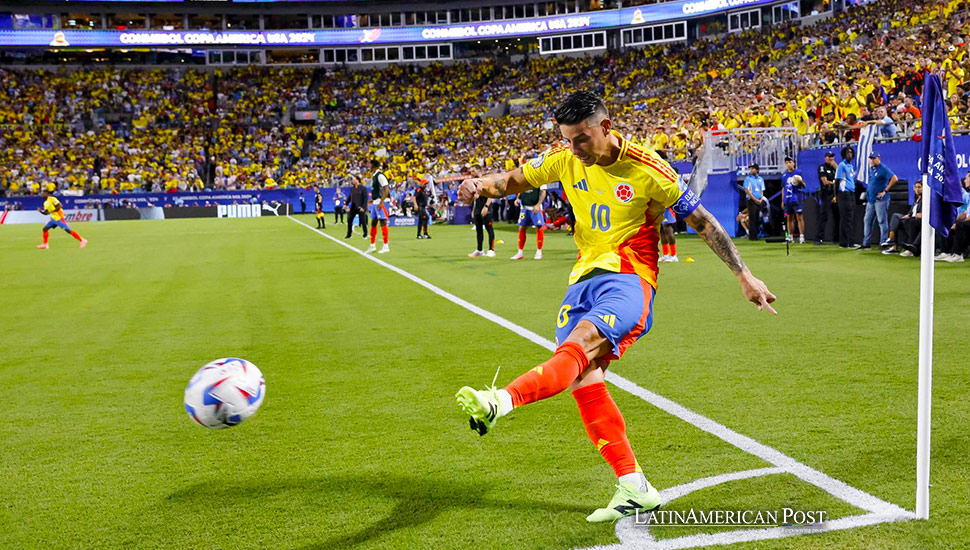The Transfer Market Impact of Latin American Stars Shining in Major Soccer Tournaments

Major tournaments like the Copa America showcase Latin American talent, attracting global attention and lucrative transfer deals, reshaping the soccer landscape.
Major soccer tournaments serve as grand stages for players to showcase their talent to a global audience. These tournaments allow clubs with deep pockets to spot and acquire standout performers. Latin American players, in particular, often shine brightly during these events, attracting attention from top European clubs and significantly influencing the soccer transfer market.
Tournaments like the Copa America and the World Cup have historically been launchpads for Latin American players. These events provide a platform for players to demonstrate their skills against high-level competition, often leading to significant career moves. A notable example is Enzo Fernandez, who was instrumental in Argentina’s World Cup victory in 2022. His stellar performance caught the eye of Chelsea, leading to a record-breaking transfer from Benfica for €121 million ($132 million at the time).
Similarly, James Rodriguez’s outstanding performance for Colombia in the 2014 World Cup earned him a move to Real Madrid. These tournaments offer players unique opportunities to elevate their profiles, making them hot commodities in the transfer market. Clubs are always looking for the next big star; these tournaments often provide the perfect scouting ground.
The Copa America, in particular, has been a rich vein of talent for European clubs. Players like Lionel Messi, Neymar, and Luis Suarez have not only significantly impacted European soccer but also reshaped the global soccer landscape following their performances in this tournament. The thrill of discovering the next Messi or Neymar drives clubs to keep a close watch on these events, hoping to secure the services of future superstars.
Scouting and Evaluations: Beyond Tournament Performances
While major tournaments can elevate a player’s market value, the modern scouting process is far more comprehensive than in the past. Clubs now rely heavily on data analytics and extensive scouting networks to evaluate players over extended periods. This approach helps mitigate the risks of making transfer decisions based on a handful of standout performances in a tournament setting.
Tim Keech, founder of MRKT Insights, a data-focused football consultancy, notes that tournament performances can impact a player’s value, but they are just one piece of a giant puzzle. “Broadly, I don’t think tournament performances have anywhere near the impact they used to,” Keech says. “But I think it can still impact the value of an individual player.” He explains that while a good tournament can increase demand, clubs also consider the player’s overall body of work and consistency.
Despite the sophisticated scouting methods, the allure of a player who excels on the big stage can still sway decisions. For instance, Nico Williams’ impressive performances in the European Championship have made him a sought-after player. Clubs like Arsenal, who were already monitoring him, have seen their interest intensify following his standout tournament display.
This blend of data-driven scouting and traditional talent spotting creates a dynamic transfer market. Players who perform well in tournaments can see accelerated moves or bumped-up shortlists, even if their talent was already recognized. Clubs balance the excitement of discovering new stars with the diligence of comprehensive evaluations, ensuring they make informed decisions and the audience feels reassured about the transfer decisions.
Impact on the Latin American Soccer Landscape
The transfer of Latin American players to European clubs profoundly affects soccer in Latin America. These moves often bring significant financial benefits to the players’ home clubs, enabling them to invest in youth development and infrastructure. For instance, River Plate received a substantial economic boost from Fernandez’s transfer to Chelsea, which can be reinvested in nurturing future talents.
However, the departure of top players also poses challenges. The constant flow of talent to Europe can weaken domestic leagues, making it difficult for them to compete internationally. This talent drain is a double-edged sword; while it provides financial resources and global recognition, it also diminishes the quality of local competitions and can lead to a lack of competitiveness in domestic leagues.
To counteract this, some clubs have focused on building robust youth academies and fostering local talent. Brazil’s Flamengo and Argentina’s Boca Juniors are examples of clubs that have successfully developed young players who can compete at high levels, domestically and internationally. These efforts are crucial for maintaining the competitiveness and vibrancy of Latin American soccer. It’s not just about the players leaving but also about the clubs nurturing and developing this talent, giving hope and motivation to the next generation of players.
The success of Latin American players abroad also inspires young talents across the continent. Seeing players like Messi, Suarez, and Rodriguez succeed globally motivates aspiring players to pursue their dreams. This inspiration and investment in youth development ensure a steady pipeline of talent emerging from Latin America, making the audience feel hopeful and motivated.
The Economic Dynamics of Tournament Transfers
While standout tournament performances can drive up a player’s market value, they make transfers more expensive. TransferRoom, a football recruitment organization, analyzed post-tournament transfers and found that players bought after major tournaments typically cost 54% more than other transfers. This premium reflects the increased demand and the high stakes of securing top talent showcased in global competitions.
However, the data also suggests that these investments can be worthwhile. Players acquired after impressive tournament performances tend to play more minutes, score more goals, and provide more assists than other signings. This indicates that while the initial outlay may be higher, the returns on these players can justify the investment.
Daniel Blades, head of data intelligence at TransferRoom, explains that a good tournament can enhance perceptions of a player’s quality. “A good tournament (for a player) can increase how good we think they are,” says Blades. However, he cautions against overreacting to a few games, emphasizing the importance of evaluating players over an extended period. It’s not just about the hype of a tournament but also about the player’s consistency and overall body of work that should be considered in their evaluation.
This dynamic creates significant opportunities for Latin American players. Successful tournament performances can fast-track moves to top European clubs, where they can further develop their skills and gain international exposure. These transfers often involve substantial financial transactions, benefiting players and their home clubs.
However, there are also risks involved. Clubs must be cautious to avoid getting caught up in the hype and overpay for players based on a few standout performances. Balancing excitement with thorough evaluation is critical to making sound investment decisions in the transfer market.
Balancing Talent and Opportunity
The allure of significant soccer tournaments as scouting grounds for Latin American talent remains strong. These events give players a platform to shine, attracting global attention and lucrative transfer deals. For clubs, the challenge lies in balancing the excitement of discovering new stars with the diligence of comprehensive scouting and evaluation.
Latin American soccer benefits from the financial inflows and global recognition that come with successful transfers. However, maintaining competitive domestic leagues and developing local talent is crucial for the long-term health of the sport in the region. Investment in youth development and infrastructure can help mitigate the impact of the talent drain and ensure a steady pipeline of future stars.
As the global soccer landscape continues to evolve, the relationship between significant tournaments, player transfers, and the development of Latin American soccer will remain dynamic and multifaceted. The success stories of players like Enzo Fernandez and James Rodriguez highlight the potential rewards while underscoring the need for careful, informed decision-making in the transfer market.
Also read: Copa America’s Young Breakout Stars
For Latin American players, these tournaments represent opportunities to elevate their careers and achieve international acclaim. For clubs, they offer a chance to secure top talent and strengthen their squads. Navigating this complex landscape requires passion, strategy, and foresight to ensure players and clubs can thrive globally.





